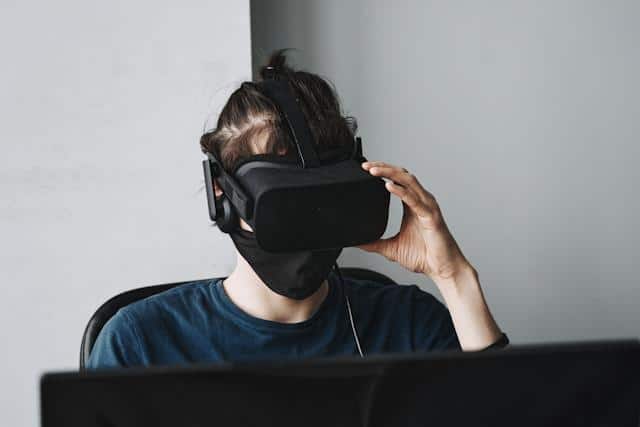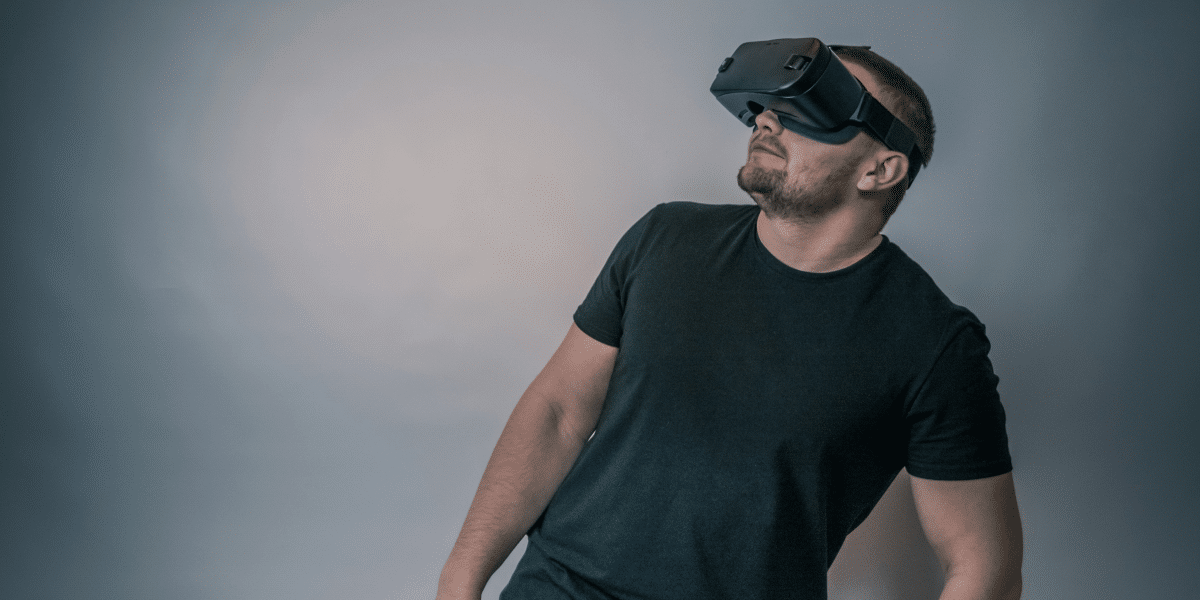As seen in many weekly news, technology is ever-evolving to help people in every aspect of their lives. One such is the innovative approach of virtual reality that is making waves in the field of addiction rehabilitation. Virtual reality therapy (VRT) combines cutting-edge technology with therapeutic methods to tackle various addiction disorders. By immersing patients in a controlled virtual environment, VRT provides a unique tool for recovery, shaping the future of how addiction is addressed.
What Is Virtual Reality Therapy?
This type of therapy involves the use of VR headsets and customized software to create simulated scenarios that therapists use to treat addiction. The 2022 study by the American Addiction Centers reveals that 46.8 million Americans aged 12 and older, or 16.7% of the population, faced a substance use disorder over the last year. Additionally, 10.5% of Americans in this age group struggled with an alcohol use disorder during the same period.
But it’s not just about strapping on a headset; it’s about experiencing tailored scenarios that help tackle the root causes of addiction. For example, a patient struggling with alcohol addiction might be placed in a virtual party where they can practice refusing drinks safely. This method potentially helps patients confront their triggers without real-world consequences and in a surrounding on a team that offers compassionate care.

The Science Behind VRT and Addiction
It’s about more than just distraction. VRT can modify behavior by immersing patients in situations where they can practice coping strategies. This type of therapy is often built upon the foundation of cognitive-behavioral therapy (CBT), enhancing its effectiveness.
Benefits of VRT in Rehabilitation
Transitioning to the benefits, VRT engages patients more deeply but also offers a consistency that traditional therapy can sometimes lack. Each session can be precisely tailored to the individual’s needs, ensuring they face their specific challenges in a supportive virtual space. This customization leads to potentially higher retention rates in rehab programs, as patients can feel actively involved in their recovery process. Additionally, the safe, controlled setting of VRT allows for exposure therapy without the risk, enabling patients to gain confidence and mastery over their responses to real-life triggers.
VRT Enhances Traditional Rehab
As virtual reality therapy gains traction, traditional drug and alcohol rehab facilities are beginning to adopt this technology, blending it seamlessly with their existing treatment programs. This integration potentially enhances the effectiveness of rehab services by offering patients innovative ways to confront and manage their addiction-related behaviors in a safe and controlled environment. For instance, facilities now use VR to simulate real-life situations that trigger substance use, allowing patients to practice coping strategies under the guidance of professionals. This method can support traditional therapeutic approaches like group therapy and counseling and adds a layer of innovative, experiential learning that can deeply resonate with patients. By incorporating this type of therapy, these facilities can help you get the addiction treatment you need, not just keeping pace with technology—they are also broadening their toolkit, which can lead to improved outcomes for individuals battling addiction.
Virtual Reality Therapy vs. Traditional Methods
When comparing this type of therapy with traditional rehab methods, you might wonder: which is more effective? Conventional treatment often includes medication and cognitive-behavioral techniques, which have proven successful for many. However, virtual reality therapy offers a different kind of engagement that can lead to high success rates in certain cases.
Here’s how they stack up:
- Engagement: VRT is interactive, often making therapy sessions more engaging for participants.
- Environment Control: Traditional methods can’t always control environmental factors, while VRT creates specific scenarios tailored to individual needs.
- Anonymity: VRT allows patients to engage in therapy with more privacy, sometimes encouraging more openness during sessions.
Additionally, the use of this therapy can be seen as a tool for nourishing the body and mind, allowing patients to engage in therapeutic scenarios that promote mental health without the stigma often associated with traditional therapy settings.

Challenges and Limitations
Yet, virtual reality therapy isn’t without its challenges. Accessibility is a major hurdle; not everyone can afford or access the necessary technology. Also, VR can cause physical side effects like dizziness or disorientation, which might limit its suitability for some patients.
Furthermore, the common medication myths that suggest technology-based treatments are impersonal need to be addressed. In reality, VRT can be deeply personalized and is often integrated with traditional therapeutic techniques by a live therapist guiding the session.
Affordable Recovery Solutions For All
While virtual reality therapy (VRT) offers promising results in addiction rehabilitation, its accessibility is limited by high costs and technological demands, making it a challenging option for many individuals seeking help. These barriers can prevent those in need from experiencing the full benefits of this innovative treatment. However, there is a more affordable and equally effective alternative available at traditional rehab facilities.
At Little Creek Recovery, a team of professionals understands the challenges of recovery. They strive to provide a supportive and structured environment for those undergoing the recovery process. Their dedicated team, many of whom are former residents, is proof of the potential of their approach. Using the 12-step model and reality-based therapies, they focus on spiritual growth and personal development in a clean, safe, and confidential setting, making effective addiction treatment accessible to everyone.
Future Directions in VRT for Addiction
Looking ahead, the potential for VRT in addiction therapy is vast. Researchers are exploring more affordable VR technology to make these tools accessible to a wider audience. Also, innovations such as artificial intelligence could enhance the personalization of virtual scenarios, making them even more effective. Here are a few avenues being explored:
- Integration with AI: To better adapt responses and scenarios to the patient’s immediate reactions.
- Mobile VR kits: Making VRT accessible at home, which can help reach a wider audience.
- Biofeedback mechanisms: Incorporating physiological signals to tailor the virtual experience in real time.

Conclusion
In wrapping up, virtual reality therapy presents an exciting frontier in addiction rehabilitation. Its ability to simulate complex, real-world situations offers a new dimension of support for those in recovery. While challenges remain, the ongoing advancements in technology and increasing evidence of its benefits suggest that VRT could become a standard part of addiction treatment protocols. As this field evolves, it promises not just to change lives but potentially to save them, turning the tide in the fight against addiction.
References:
https://americanaddictioncenters.org/addiction-statistics
https://www.ncbi.nlm.nih.gov/pmc/articles/PMC7366939/
https://www.ncbi.nlm.nih.gov/pmc/articles/PMC7324842/
Disclaimer: The information provided in this article is for general informational purposes only and is not intended as medical advice. Readers should consult a qualified healthcare professional before making any health-related decisions. The contents of this article should not be used as a substitute for professional medical advice, diagnosis, or treatment.
Published by: Khy Talara

















